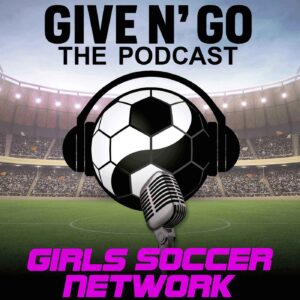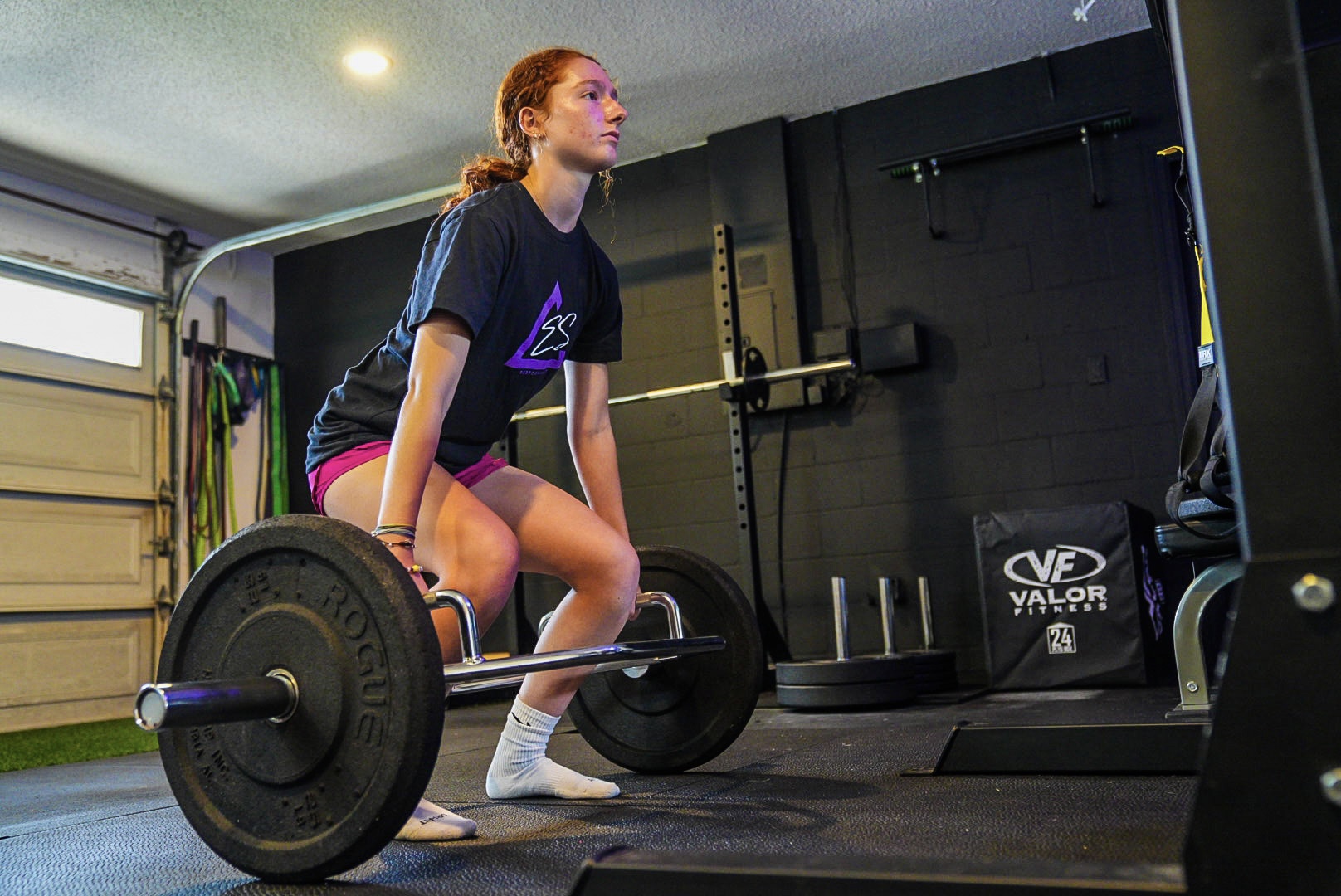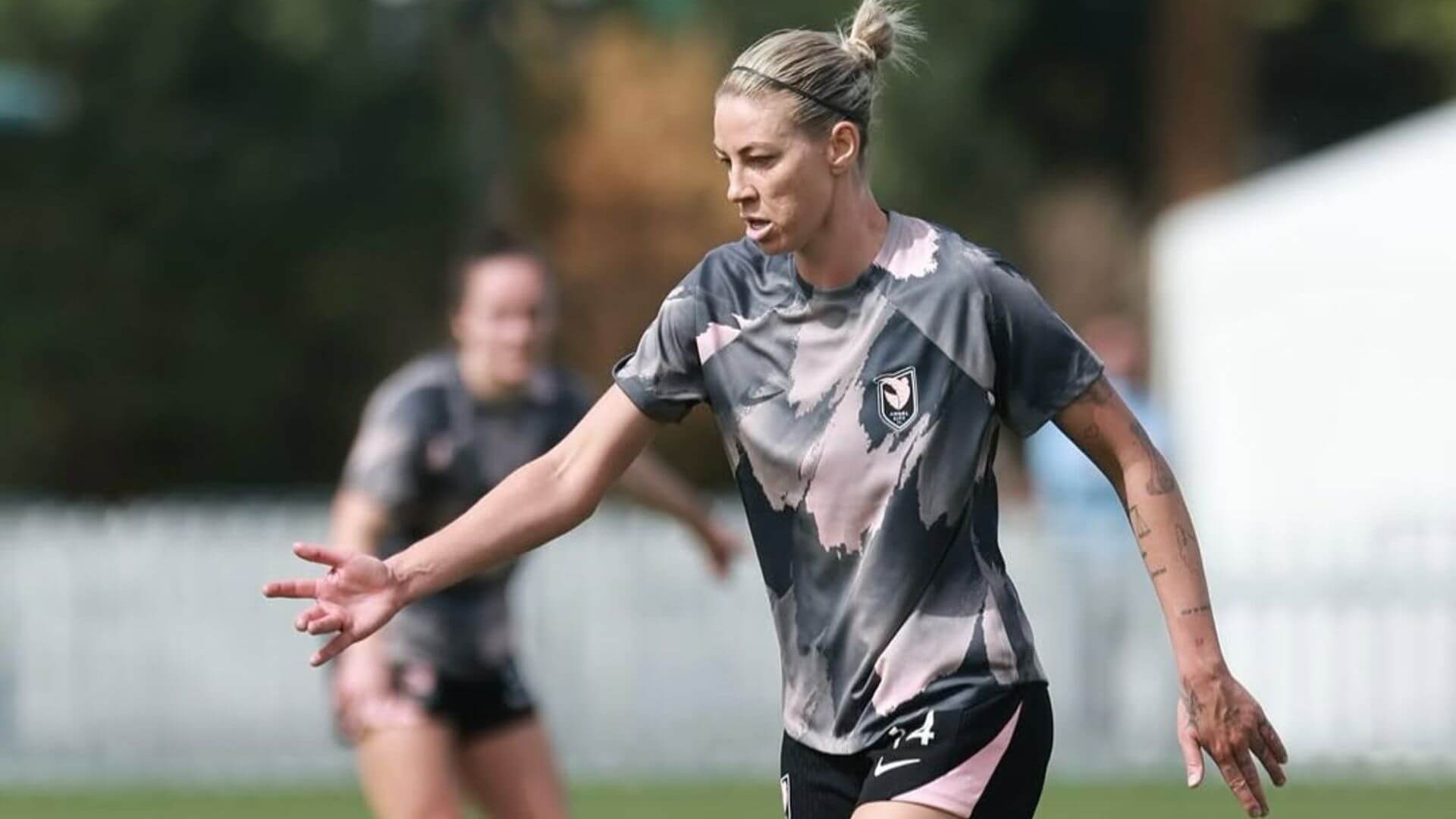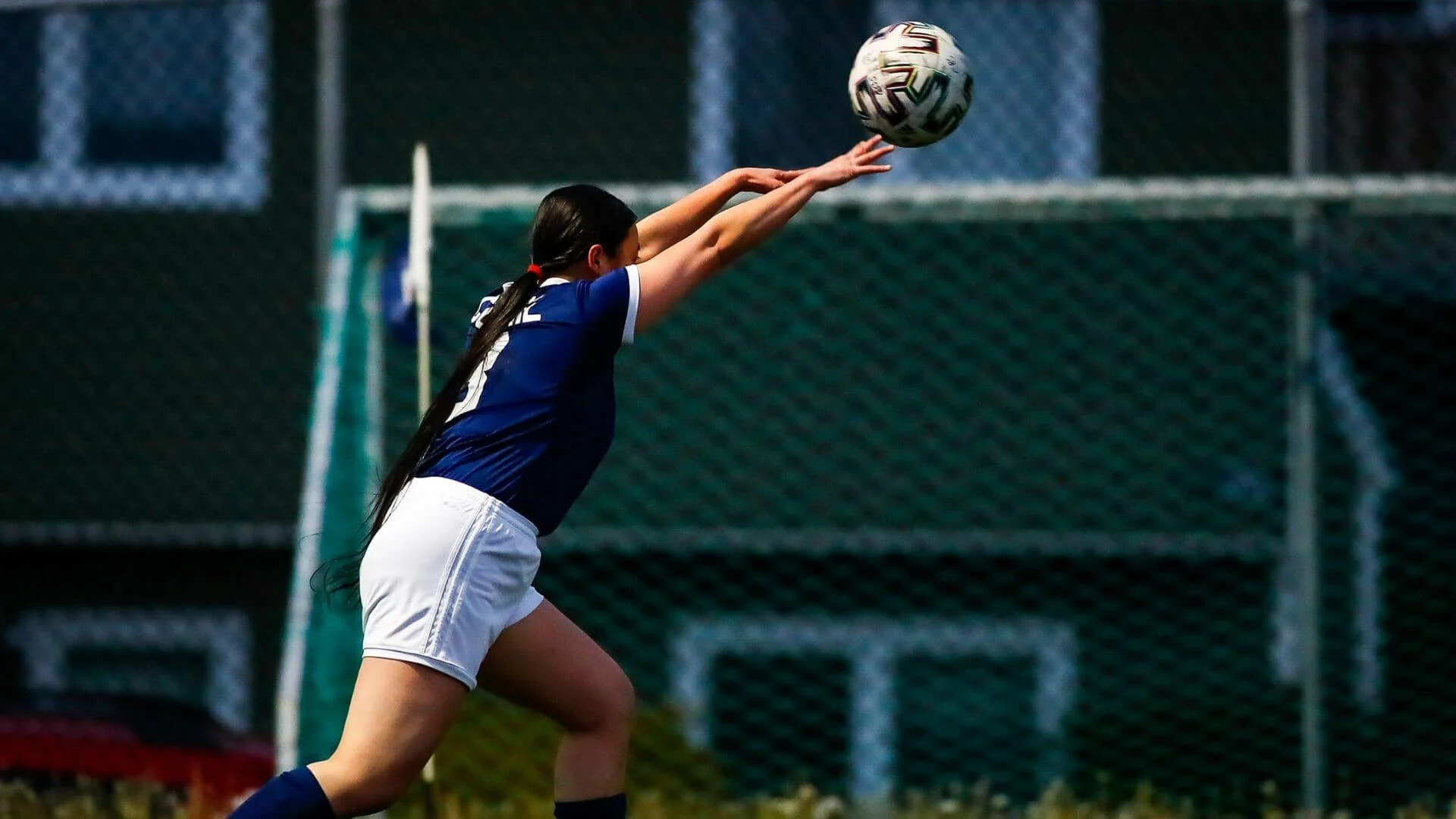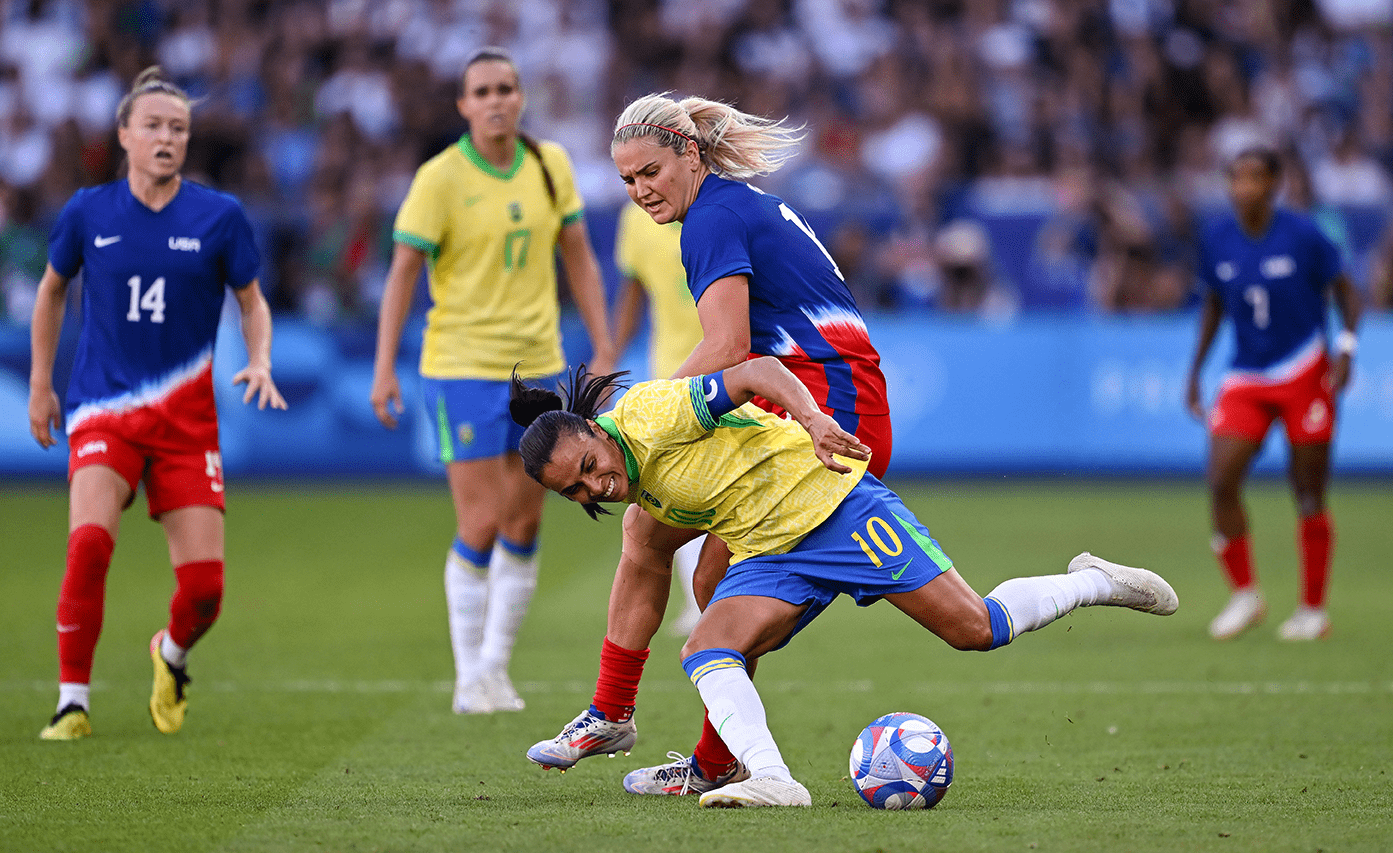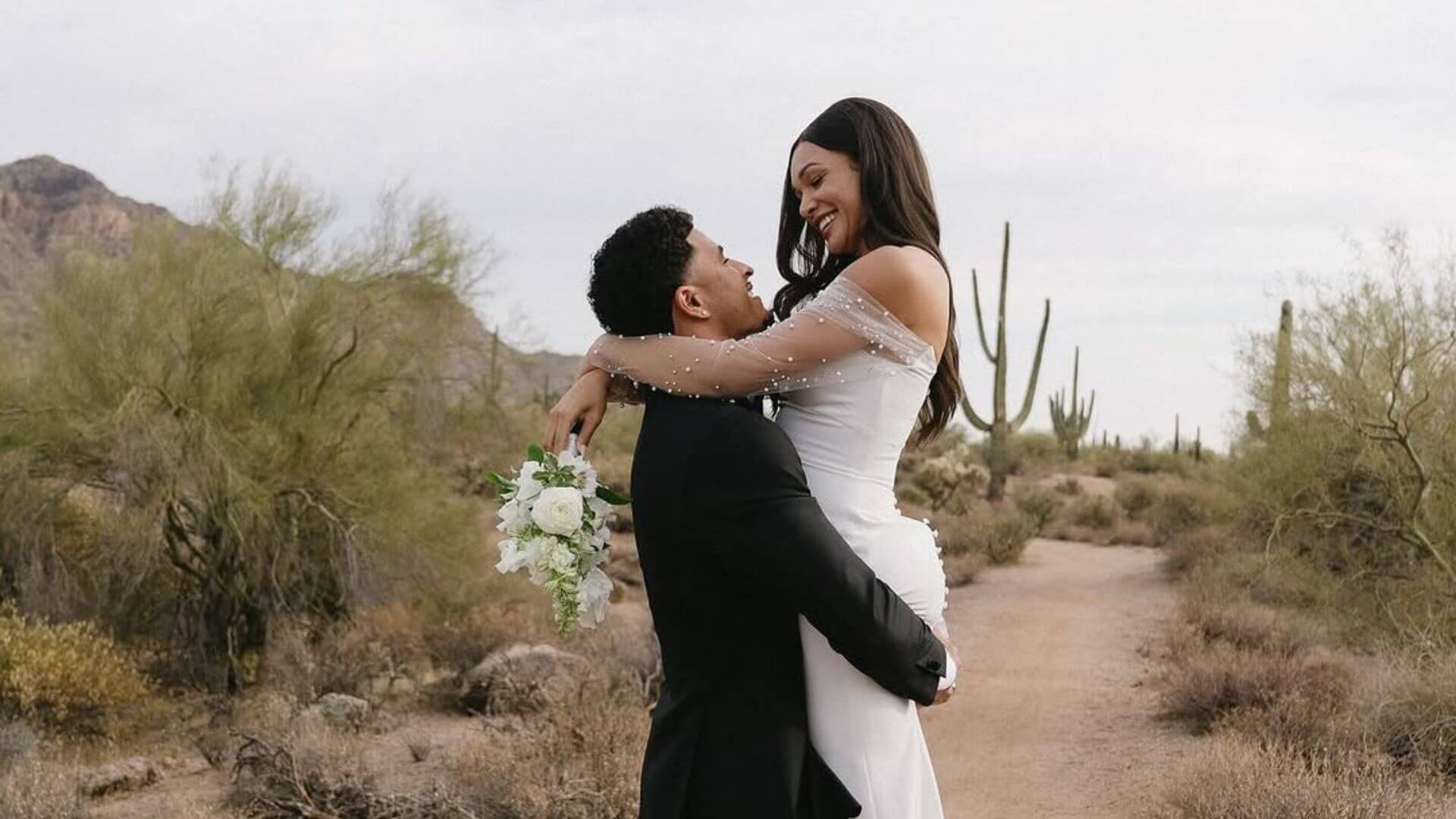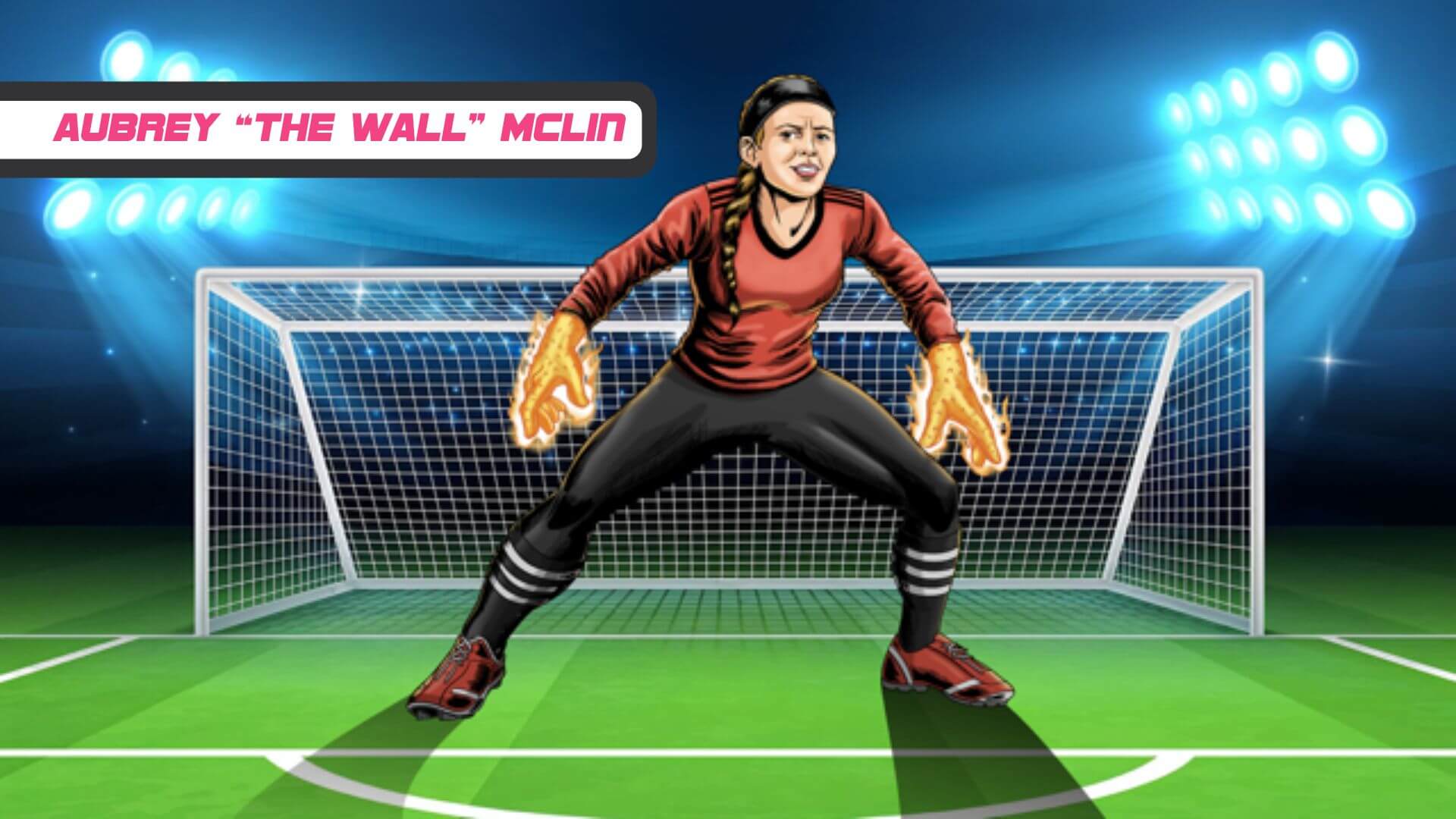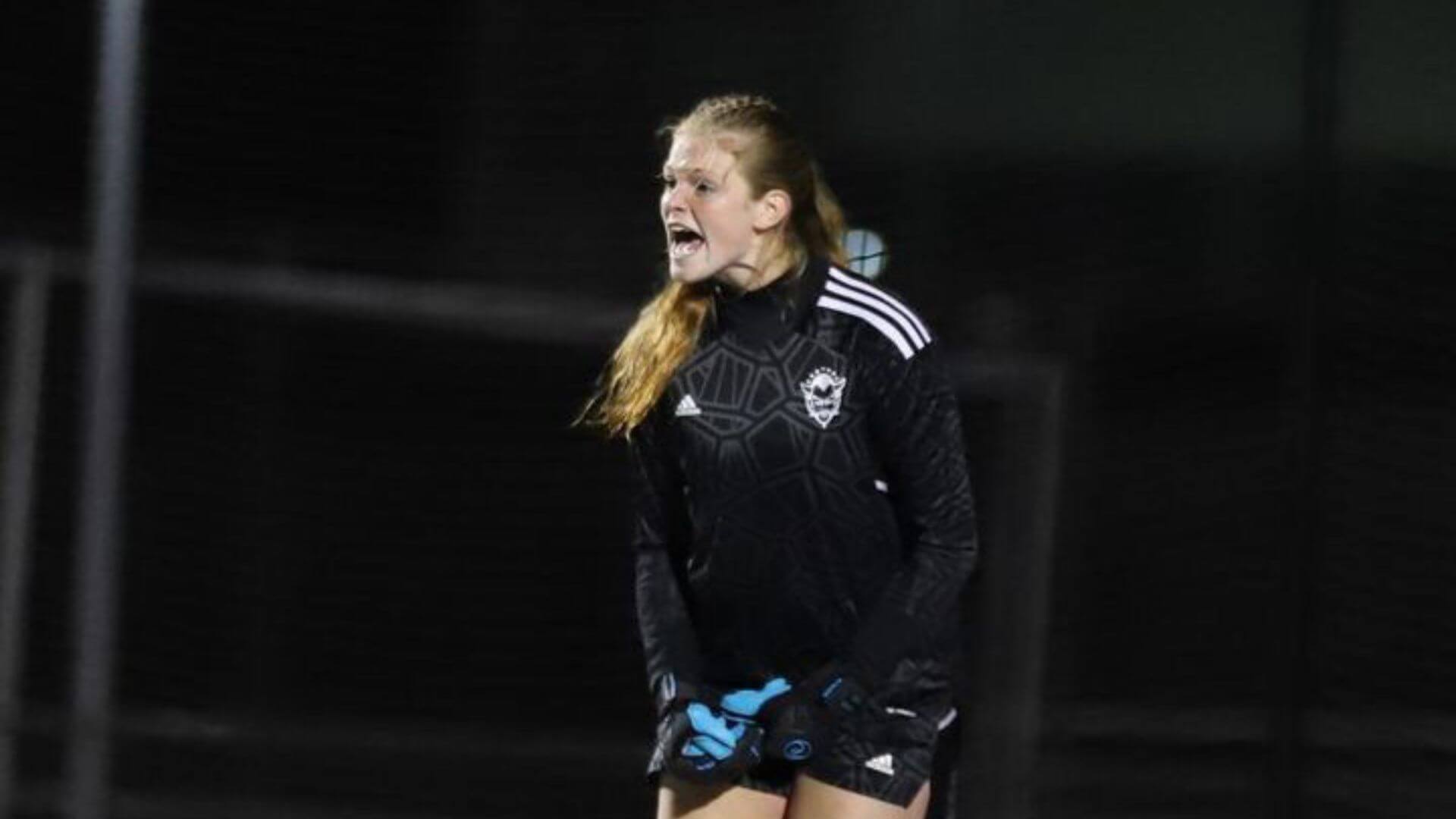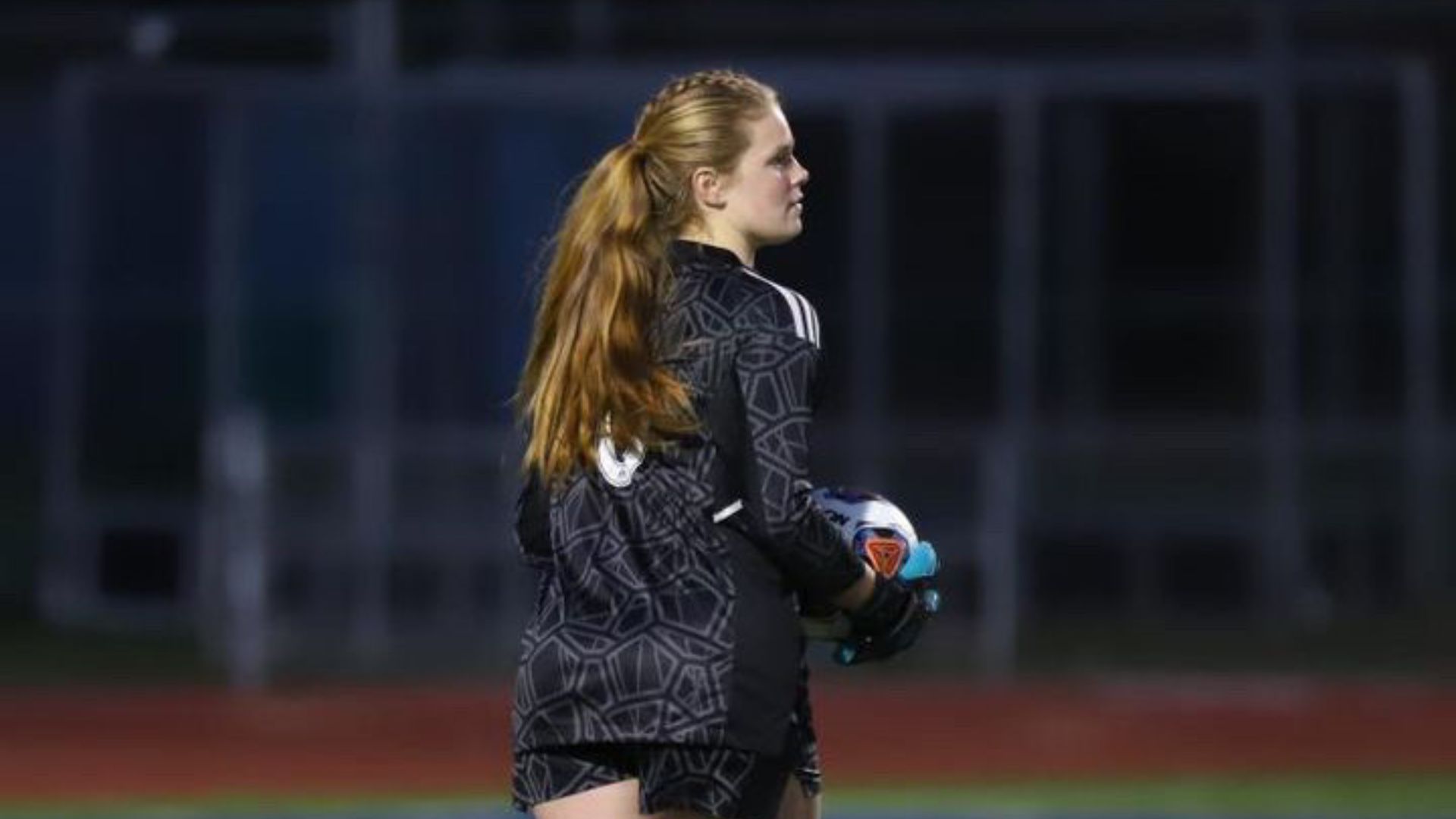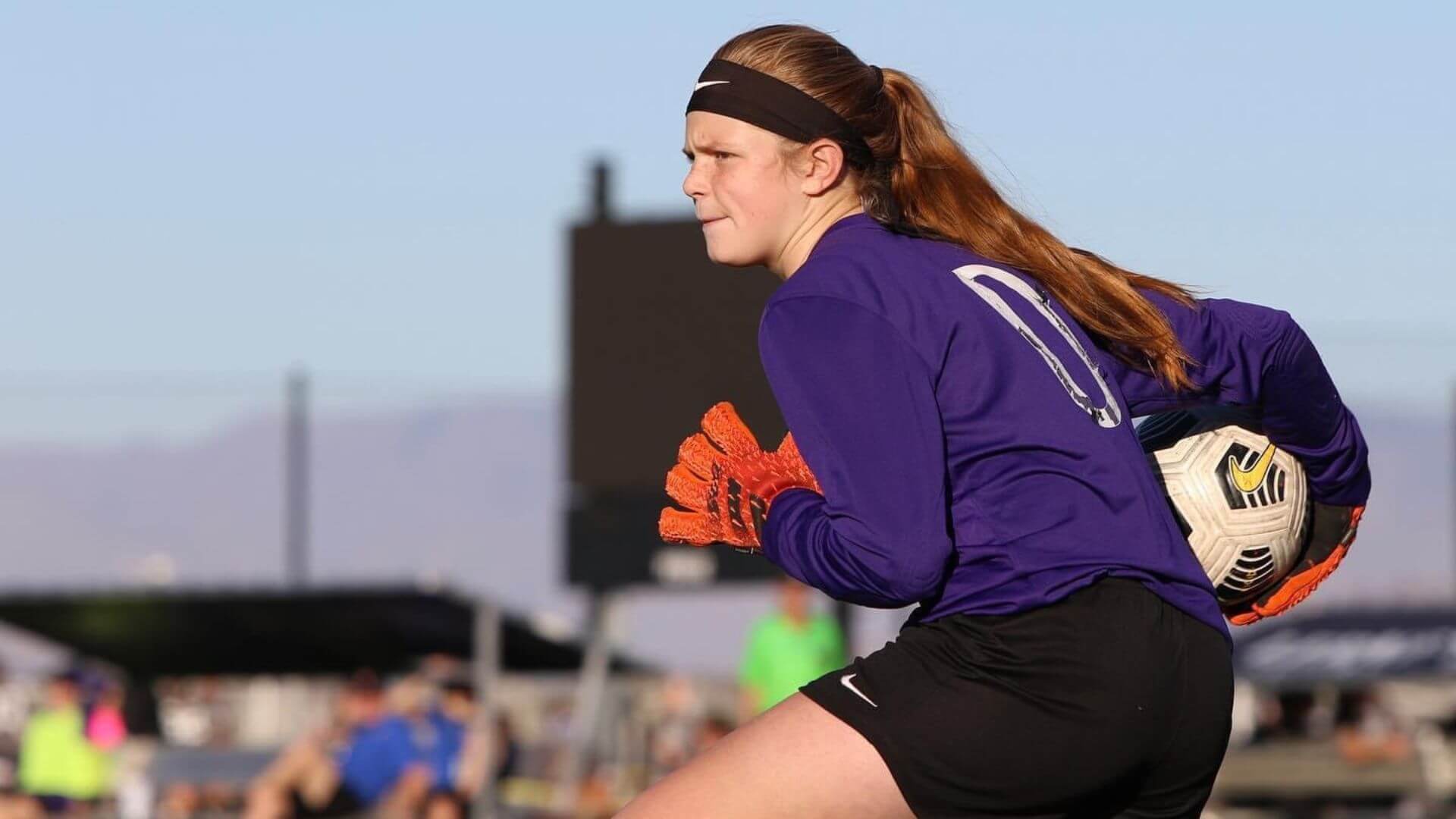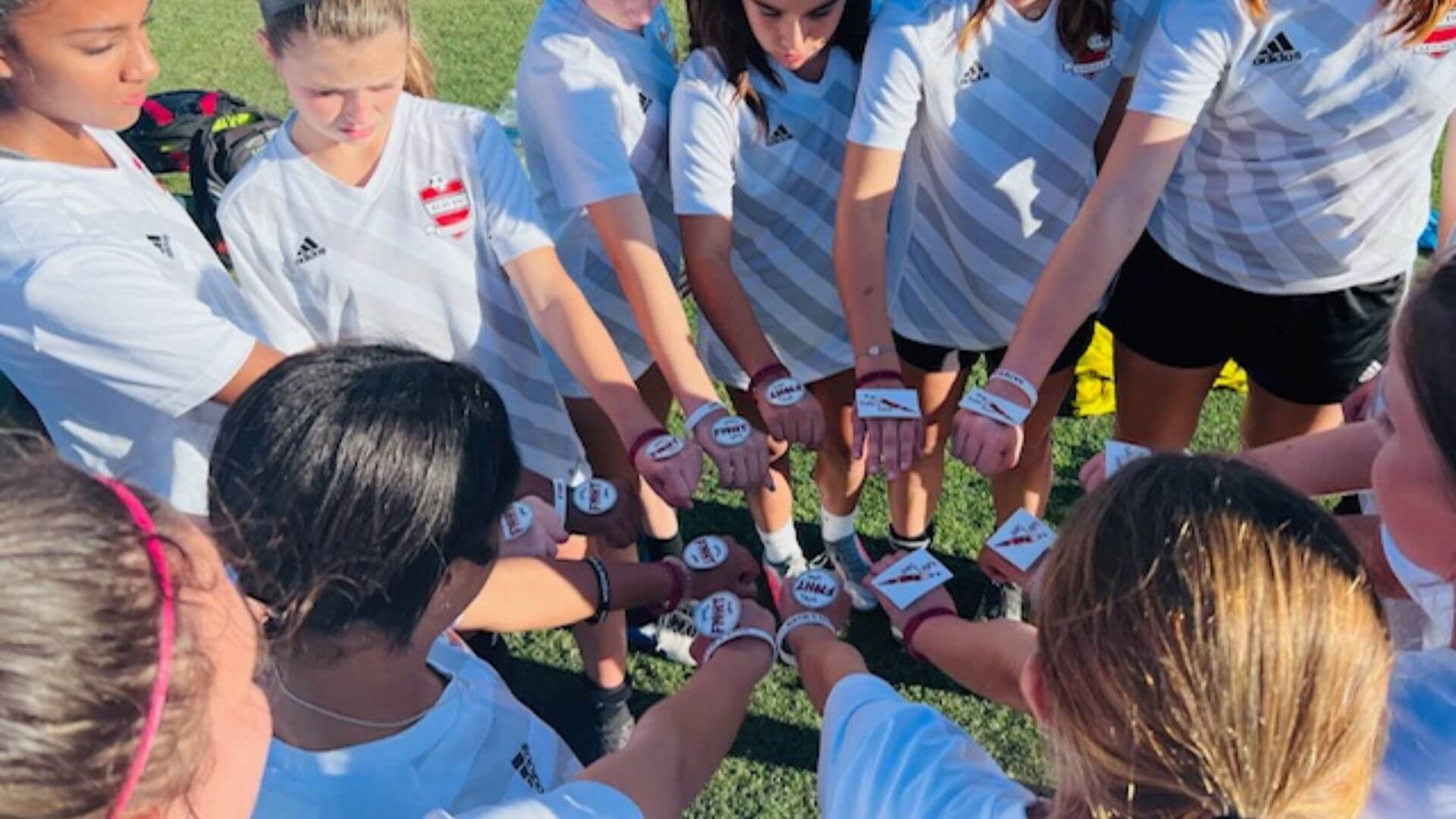The Upside Down: On the Front Lines of Sports’ Culture Toxicity
The sports landscape and culture we see today are much different from what they were in the past. Sports unite athletes through teamwork, common objectives, and, naturally, love for the game. Like any social environment, it has its complications. The growth of women’s sports and a more competitive landscape has opened new opportunities and challenges.
In an era with a growing focus on individual recognition, mixed in with team success, athletes can easily fall into the trap of self-comparison. This can lead to feelings of jealousy over a teammate’s or competitor’s playing time and achievements, creating tension that can undermine team cohesion. However, women in sports should not get stuck in traps like this and view one another as rivals. Instead, we should embrace a mindset of inspiration and support, lifting each other up. This shift in perspective can fuel the growth and energy surrounding women’s sports. Our biggest competition should not be with others but with ourselves, striving to improve, little by little, each day.
Social media has further reshaped how athletes interact and relate to each other, offering a space for connection. But it has also become a place where I have witnessed poor sportsmanship through subtweeting teammates and competitors, passive-aggressive comments, and trash talk that extends beyond the field.
I’d like to visit some of those “upside-down” moments I’ve experienced in sports culture and share some strategies that have allowed me to get back on my “right side up.” Some elements include the competitive nature of positions and rankings and the impact of social media. Through my experience, I hope to shed a little light on what I try to do to bridge the gap on the more challenging aspects of sports culture while also staying true to myself.
When Competition Crosses a Line
Competition can inspire athletes to work harder to be their best, but it can also breed tension, anger, or resentment when some feel overlooked or undervalued. Fighting for a position and fighting for rankings can make athletes better people, but conversely, it can also make them worse. I witnessed this in a non-club training environment once a week. I ultimately withdrew from the group entirely due to the actions (or inaction) of one person who created an increasingly toxic environment. From their fears and insecurities came relational aggression directed toward me.
This situation started with seemingly playful banter and teasing when I got scored on or when they thought I had made a mistake. At first, I tried to dismiss the comments, but they became increasingly frequent. The situation escalated when the athlete behaved physically aggressively. They started throwing a soccer ball at the back of my head numerous times between training sessions and then actually tripped me when I got near the goalpost and hit my head.
The training was a space that I just wasn’t thriving in anymore. So, I made the best decision for myself, which was to leave. I tried various methods first, though. I downplayed how much it bothered me, praised their saves and good performance, ignored the behavior (not the person), and made sure to remain respectful to avoid disrupting the training goals. Despite my attempts and efforts, the situation never improved.
I was 12 or 13 years old at the time, without the experience or tools I have now to handle things differently. In hindsight, before I distanced myself, my first course of action would have been to consult with my coaching staff and, if applicable, discuss the behavior with the person in question.
The Double-Edged Sword of Social Media
Social media is beginning to play a significant role in student-athletes’ lives. For me, it has such amazing benefits that it gives a platform for athletes to show off their skills. This is essential because there are hundreds of thousands of college coaches who can watch highlights. However, the “upside down” side of social media can be a lot more damaging if you’re not careful about protecting yourself.
I have noticed athletes using social media as a way to manipulate the psyche of their competitors. They point out the athlete’s errors, criticize performance in public, or throw out subtle digs that chip away at confidence. At times, it becomes even a platform for bullying; people target others to boost their score or rank. Fortunately, my experiences with social media have tended to be more positive than negative. But I have been through a few challenging times, which are tricky to navigate.
A painful experience for me was being body-shamed on social media by a competitor. I thought we had a healthy competition built on mutual respect for each other and our talent and drive for the sport. At first, my confidence, self-worth, and self-esteem took a severe beating. Fortunately, it wasn’t permanent. At that time, I did have a female coach who checked in on her athletes regularly. She focused heavily on the mental aspect of the sport.
That coach happened to check in with me the day after the incident. At first, I wasn’t sure I could share what happened. I felt embarrassed. Who wants to talk about something they’re already self-conscious about, let alone when it’s been spotlighted on social media? But I knew deep down that if I didn’t, it wouldn’t do me any good on or off the field.
When I told her what I was going through, she was supportive and offered me such good advice. That encouragement made such a difference. Later, I shared my experience with a handful of others, and the response was incredible. Everyone had been through something like that. It was an eye-opening experience. I was not alone. In those talks, I learned situations like this are not uncommon for athletes and can have a major impact on mental health. That’s why clubs and organizations should support athletes in learning to use social media responsibly and thoughtfully.
Athletes, particularly youth athletes, should understand the pros and cons of social media and learn how to combat the pressure it causes. By reinstituting a positive intent behind social media, setting boundaries as to what you will and will not participate in (i.e., only engaging in areas that align with your mission and message, and focusing on your growth while disregarding external validation driven by social media algorithms), you can maintain a healthy relationship with these incredible tools.
That said, I ultimately do take the view that social media can be a powerful tool, but caution should be taken as it can also be a harmful distraction. It is the responsibility of athletes to approach it thoughtfully and the responsibility of the adults in their lives to provide them with the resources and guidance they need to do that.
The Pressure of Rankings
As with social media, being ranked for your hard work and effort is an attention hook, and it can be instrumental in recruiting. It feels nice to be scouted and put in the public eye. The downside, however, is that athletes can get obsessed with getting hits from the ranking sites. When an opponent makes a mistake in a notable game, there’s a good chance someone will post a clip online, magnifying that moment for all to see.
I’m all about learning, and I think some of my important learning moments have been when I have experienced situations like this. I wouldn’t necessarily call these mistakes. They’re more like opportunities to reflect on and improve.
My biggest learning lesson came from one of these situations. As a goalkeeper, I was mastering 1v1 tackles to bolster my confidence. I played on a men’s team, and as I came out hard during a game to try to tackle the ball from a player on the other team, I managed to get the ball. But the guy flew into the air and then lay on the ground for a minute, pretending to be hurt. I didn’t fully secure the ball, and it got kicked away. When a media organization shared a clip of the tackle, I received an avalanche of malicious messages and comments, especially from adult men.
For days, I couldn’t leave the post. I read and reread the comments. I was stuck. Another female coach who worked with this men’s team noticed the comments and called to help me work through the situation. Her support was incredibly impactful. I was shocked by seeing adults act like this to a teenager.
Lessons Learned & Moving Forward
Like in my previous social media incident, I learned that you have to work at maintaining a healthy balance with social media. You also need outlets or individuals you can turn to when situations like this arise. Figuring out the highs and lows on your own doesn’t always work.
Resilience, self-awareness, and self-advocacy are among the many skills involved in navigating the confusing world of sports culture. Having support and resources available to help is important. So, my hope is that by writing about my experiences they may help shed some light or offer guidance to anyone who may be going through some of the same challenges. Keep in mind that obstacles and challenging times offer opportunities for growth. Not only can athletes flip their upside-down moments right-side-up, but with the right mindset and support, they can straighten the upside-down moment and continue on their path toward health and success.
_
GIRLS SOCCER NETWORK: YOUR SOURCE FOR GIRLS SOCCER NEWS




